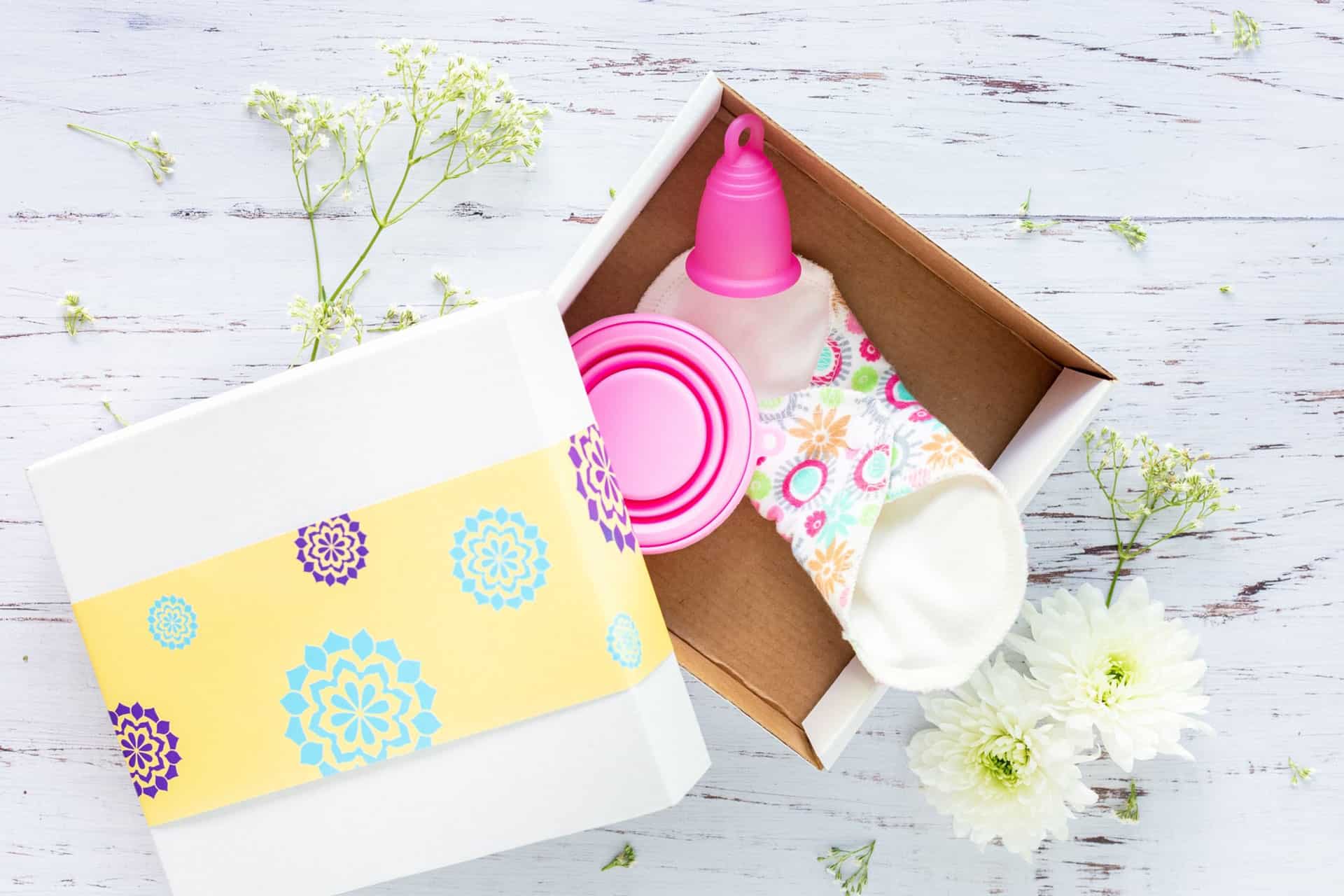
Although we may not always feel up to talking about them, they happen, every month to be exact. Yes, I’m talking about your period! Periods aren’t only a personal topic; they’re an environmental one, too. After #PlasticFreeJuly, more and more people are becoming conscious of plastic waste and ways to minimize it. Women, especially, are looking for ways to eliminate plastic from their lives, starting with their periods.
Every woman’s relationship with Aunt Flow is different, and plenty of environmentally conscious brands acknowledge that. Regardless of whether you bleed once a month or a few times a year, there are low impact period solutions for you. From the solutions you can buy in the store to period products you can make at home, we’ll cover it all. Discover how to change your ways and start having plastic-free periods.
The ubiquitous tampon is everywhere; a supermarket aisle, your purse, or even a bathroom vending machine. Regardless of where you find them, conventional tampons often come complete with plastic applicators and plastic wrapping. However, what’s inside of the applicator that may be just as harmful to you as to the environment. As far back as 2015, there has been evidence that suggests that feminine hygiene products like tampons have reproductive toxins, dioxin, and carcinogens. On top of harming the planet, conventional tampons can harm your body.
Organic and biodegradable cotton tampons are the eco-friendly alternative to conventional tampons. They lack those nasty chemicals and don’t create as much waste. With the option to purchase tampons with or without the applicator, you can even customize your experience. Some well-known eco-friendly tampon brands are TOTM, Rael, and Bon. Some other environmentally conscious brands that offer sustainable alternatives for plastic-free periods are Seventh Generation and The Honest Co.
While this idea may not be new to mothers who used cloth nappies (my mum included), it’s still worth mentioning. Cloth pads are a huge part of the plastic-free period movement because you can easily make them at home! Furthermore, ladies who are not fans of tampons may prefer this alternative. Handmade or sustainably-sourced cloth pads are easy to come by. Not to mention, you can use them over and over again.
Most zero waste or eco-stores have cloth period pads on their shelves at all times. For anyone who is hard-pressed to find one of these stores near them, check out this zero waste store directory. As for ladies who are crafty and happy to sew their own cloth pads, here is a great online tutorial. Giving cloth period pads a chance is definitely worth it. I have friends who swear by their cloth pads and love sewing them in their free time.
I first heard about menstrual cups from a friend about five years ago. This friend of mine began to use hers because she experienced irregular bleeding frequently, so it was convenient for her unusual cycle. About two years ago, when I started my own zero waste journey, I purchased my menstrual cup. Although I’d been using low impact tampons for years by that point, I felt it was the logical next step. Consider that the average menstrual cup is made of surgical grade silicone and can last up to ten years!
To put that into perspective, a woman can use a total of five menstrual cups in her life instead of disposing of tens of thousands of feminine hygiene products. Furthermore, menstrual cups can last for anywhere between ten and twelve hours. These days there are plenty of menstrual cups out there on the market. Some of the more popular ones are the DivaCup and the Fun Cup. Of course, I’ll admit that I am biased here, but I honestly would never go back to using tampons or pads after my experience with the menstrual cup.
Menstrual underwear can work well separately or in unison with the above mentioned period products. In fact, I know plenty of women who use them solely for when they go to sleep or plan to have long days outside of their home. Still, period underwear is gaining popularity and comes in an array of colours, shapes, and sizes. This period product works by incorporating several layers of breathable fabric to lock away moisture and keep their wearers dry. Talk about comfy plastic-free periods!
Perhaps the best-known brand of period underwear is THINX. One of their thongs can hold as much blood as a single tampon. While these underwear work well for millennials, there are plenty of other brands to choose from. Dear Kate has a patented Underlux material that is light and super absorbent. Australian brand Modibodi provides a variety of fabrics and fits, including sizes for girls!
Comfort is crucial when it comes to your period. Nevertheless, making the change to greener alternatives and having plastic-free periods doesn’t have to be uncomfortable. With all of these environmentally conscious options, you can bleed red, but think green. If you’re interested in learning more about more natural beauty alternatives, sign up for WapoBeauty’s Shampoo Bar Workshop. To learn more about natural cosmetics, read more about the Complete Facial Skincare Workshop online.
Ashuni Pérez is an American writer based in Valencia, Spain. She has a passion for natural beauty and the environment. Ashuni loves to cycle and drink smoothies in the sun. Follow her on Instagram at @ashuuuuni